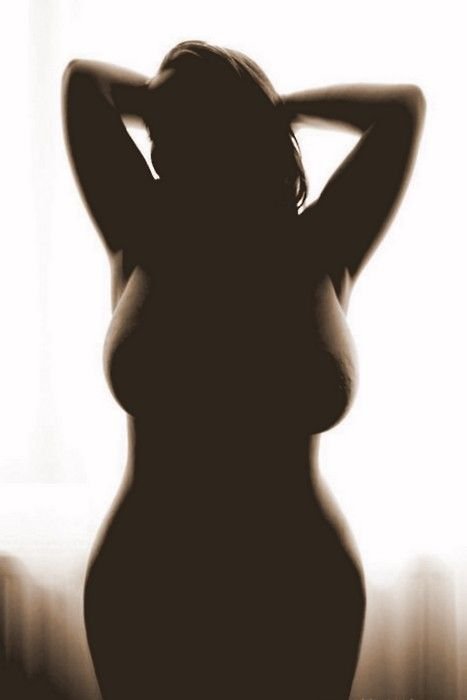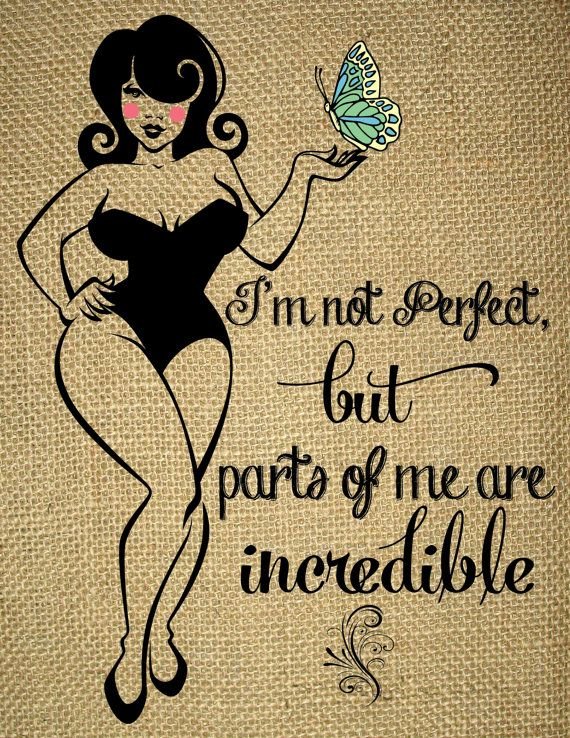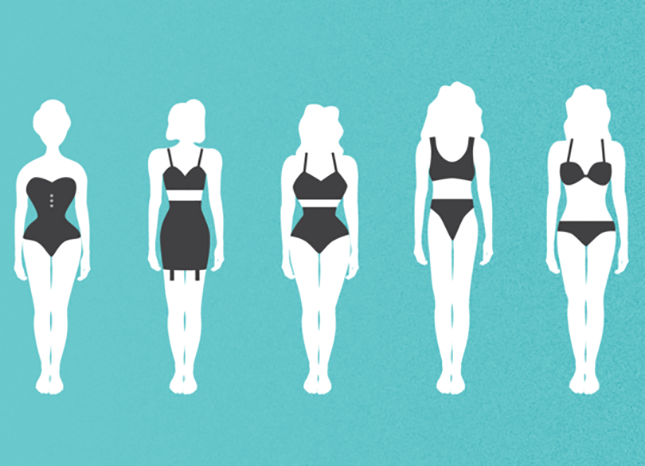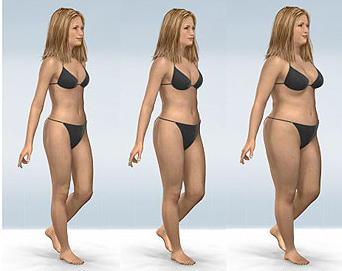What Men “Know” Without Knowing
Men haven’t a clue about why they prefer certain body shapes or why their brains light up when they see narrow waists and well-rounded hips and thighs. But the preferences encoded in their genes by millennia of evolution help reveal what it is about women’s bodies that foretells success in having children.

The total amount of fat a human female carries is seven times that of other animals, and much more than men! Only bears ready to hibernate, penguins facing a sunless winter without food, or whales swimming in arctic waters have fat percentages that approach those in normal, healthy, trim young women. Women, however, don’t regularly swim in arctic waters or hibernate for the winter. Why, then, have they been designed to store so much fat in their hips, buttocks, and legs?

One clue is that the fat stored there is protected; it doesn’t figure into weight fluctuations. Fat in the upper body is like a checking account with frequent deposits and withdrawals. But hip and leg fat is more like a certificate of deposit—it usually remains untouched by weight shifts. Only during the last few months of pregnancy and while nursing do women start breaking down this lower-body fat, making it exclusively available to the rapidly growing infant. Something stored there seems very important for their children. It couldn’t be just a matter of calories, because it’s easy for the mothers to get them simply by eating more of anything.

Just as human mothers have seven times more body fat than other animals, human babies have a body part that is seven times larger than the one in other animals—an enormous brain that grows fastest in the first two years of life. Other than water, the human brain is mostly fat and has a lot of a particular kind of fat: an omega-3 fat called DHA (docosahexaenoic acid). We can’t make omega-3 fats; they have to come from what we eat, and women tend to stash their DHA in the same hip and leg fat that men value.
A human baby’s need for DHA to feed its rapidly growing brain—DHA is especially incorporated into nerve cell membranes, facilitating the rapid transmission of information—is so great that a mother can’t supply enough from her everyday diet. Most of the DHA in a mother’s milk comes from what she has stored over the years in her lower-body fat. Even then, her supply is limited, as it is depleted by each child. Since a mother’s DHA levels are greatest for the first child, it may be one reason why first-born children tend to be smarter than their siblings.
Different body shapes

While a woman’s hips tell men about her omega-3 stores, her waist conveys a still richer message. In addition to having more omega-3, women with smaller waists are also less likely to have been pregnant before (or currently), so their childbearing potential is still untapped. They are also less likely to die in childbirth. The same giant infant brain that mothers have to supply with DHA also makes it much more difficult for it to fit through the birth canal. Women with higher BMIs and more waist fat are more likely to have first babies that grow too large to deliver, a problem usually fatal for mother and baby unless she has a surgical birth—and one that still takes the life of one mother in 10 without access to obstetrics. Shorter women are especially likely to have this difficulty, and they also tend to have bigger waists because they have less space for their internal organs. It’s easier for women as tall as Playmates to have small waists, and it’s also easier for them to deliver their babies.
Read More – Eternal Curves | Psychology Today
In the worst of times, the curvier a woman, the better: Scientists found that stressed-out men rate a significantly heavier female body as the most desired and rated heavier female bodies as more attractive and idealized a broader range of female figures compared to those who were not under stress.- Kena Betancur/Reuters

Previous studies have found that body size ideals are in part shaped by an individual’s resource security, and heavier body sizes are preferred where or when resources are unpredictable or unavailable. Several cultural studies have found that a strong inverse relationship between socioeconomic status, a variable for resource security, and ideal body size, in which people in lower socioeconomic status prefer fuller figures.
The study authors wrote that the latest findings suggest that individuals are more likely to prefer “mature morphological traits” like heavier body size when they experience environmental threats whether it be physically, economically or socially.
Scientists say that people may have preferences for more mature physical characteristics like heavier body size in stressful situations compared to their preferences in non-threatening conditions because physical maturity is associated with the ability to handle threatening situations and mature physical features may communicate strength, control and independence during times of threat when such qualities should be most desired.
Source: www.medicaldaily.com
journals.plos.org/plosone/article?id=10.1371/journal.pone
Men Are Totally Hardwired by Evolution to Prefer Curvy …


“Men haven’t a clue about why they prefer certain body shapes or why
their brains light up when they see narrow waists and well-rounded hips
and thighs. But the preferences encoded in their genes by millennia of evolution help reveal what it is about women’s bodies that foretells success in having children.”
As a believer, I think it is by God’s design that most of us idealize curves in women. If you look at it from an evolutionary theory perspective, you can just speculate (in my view.)